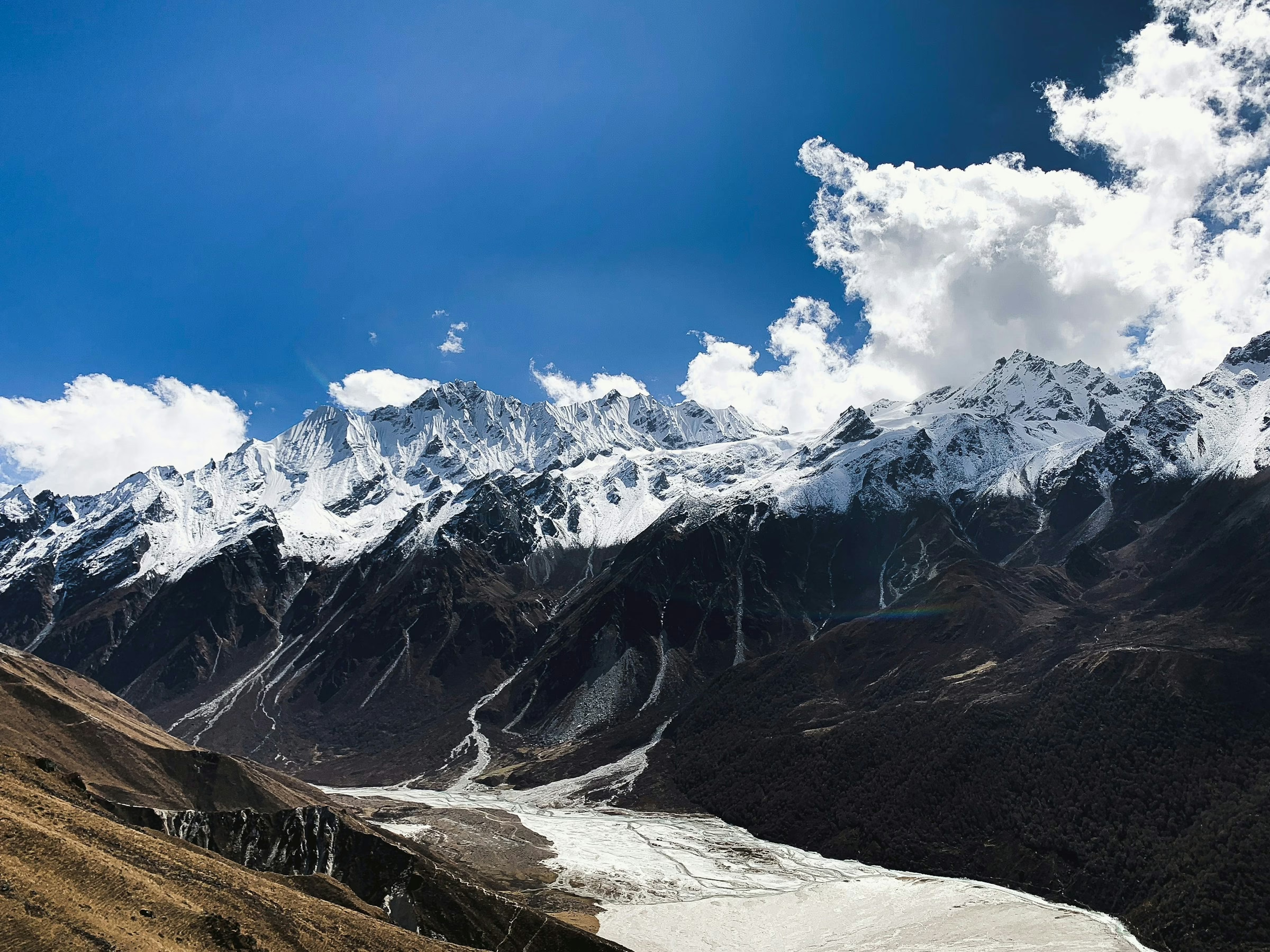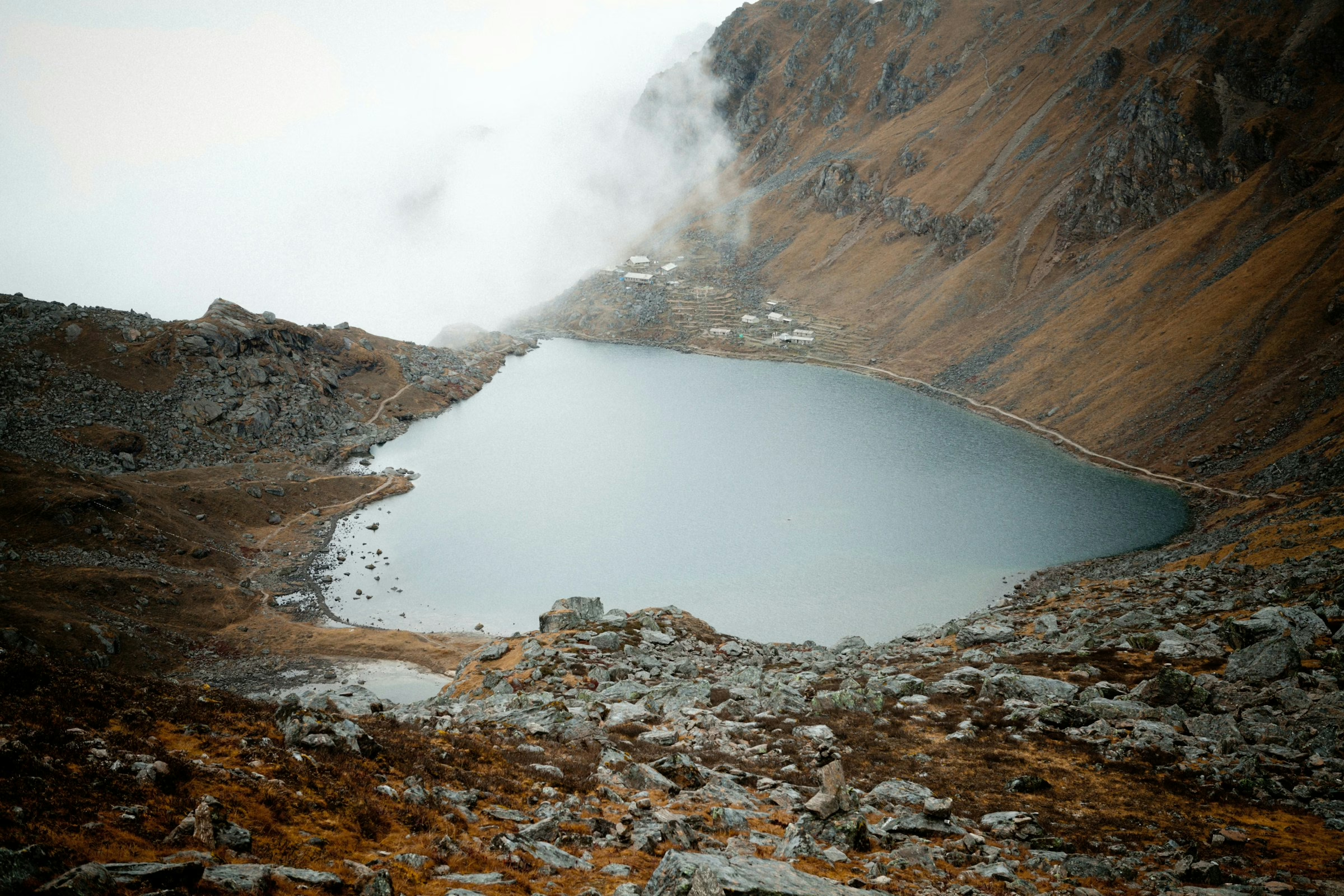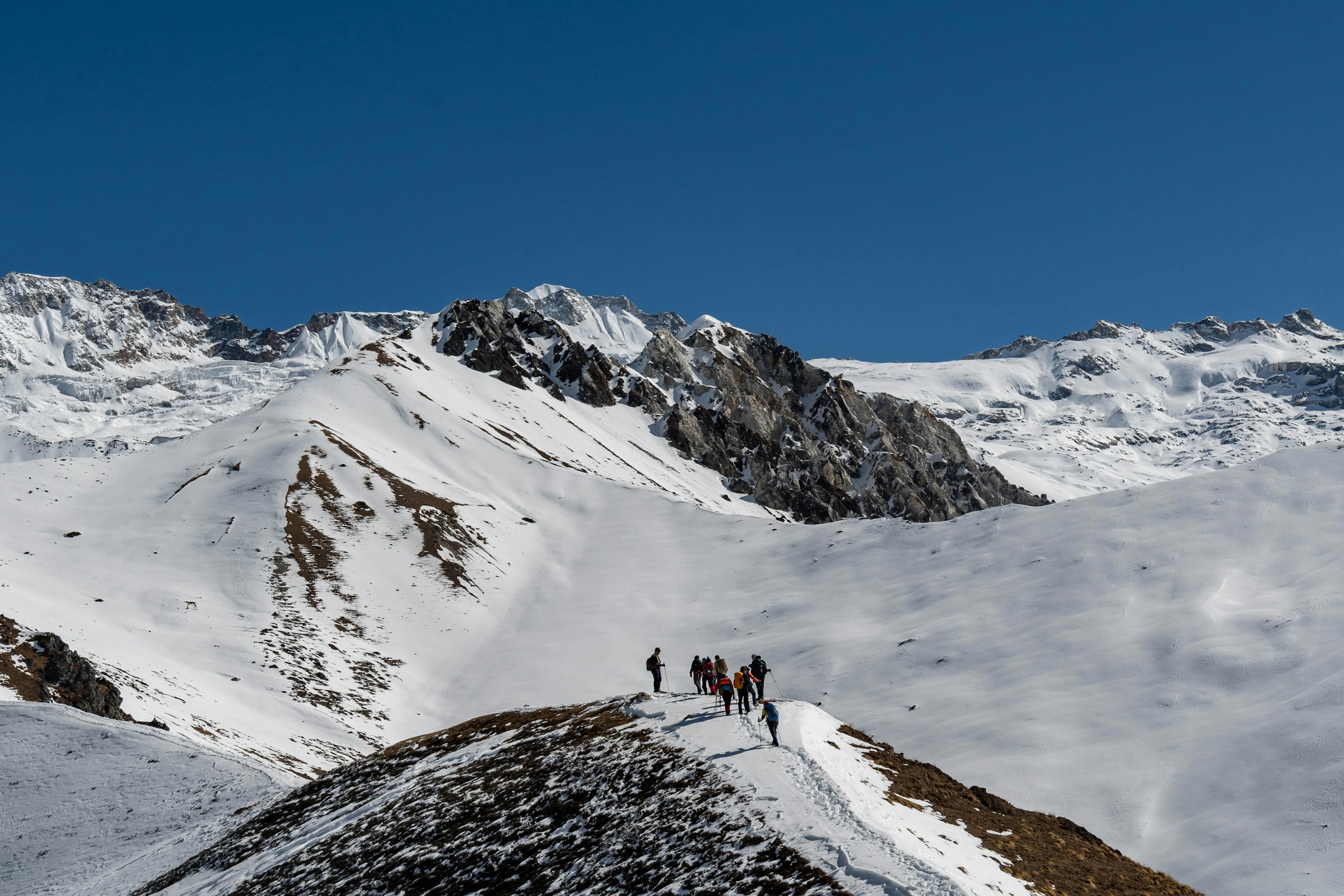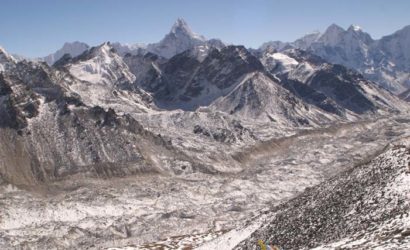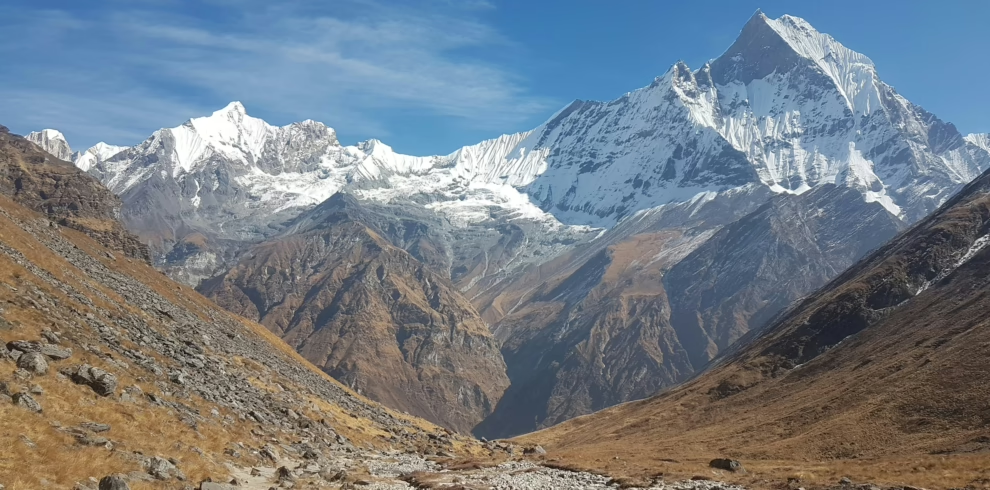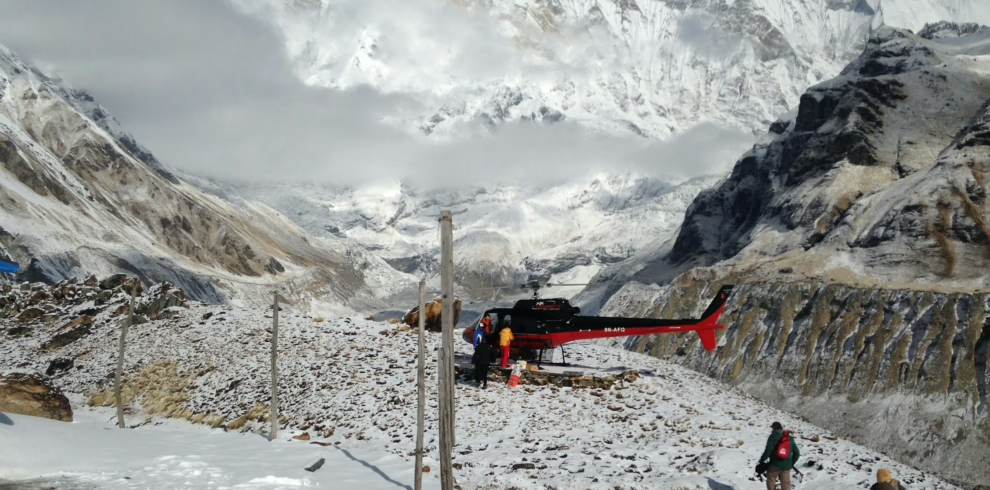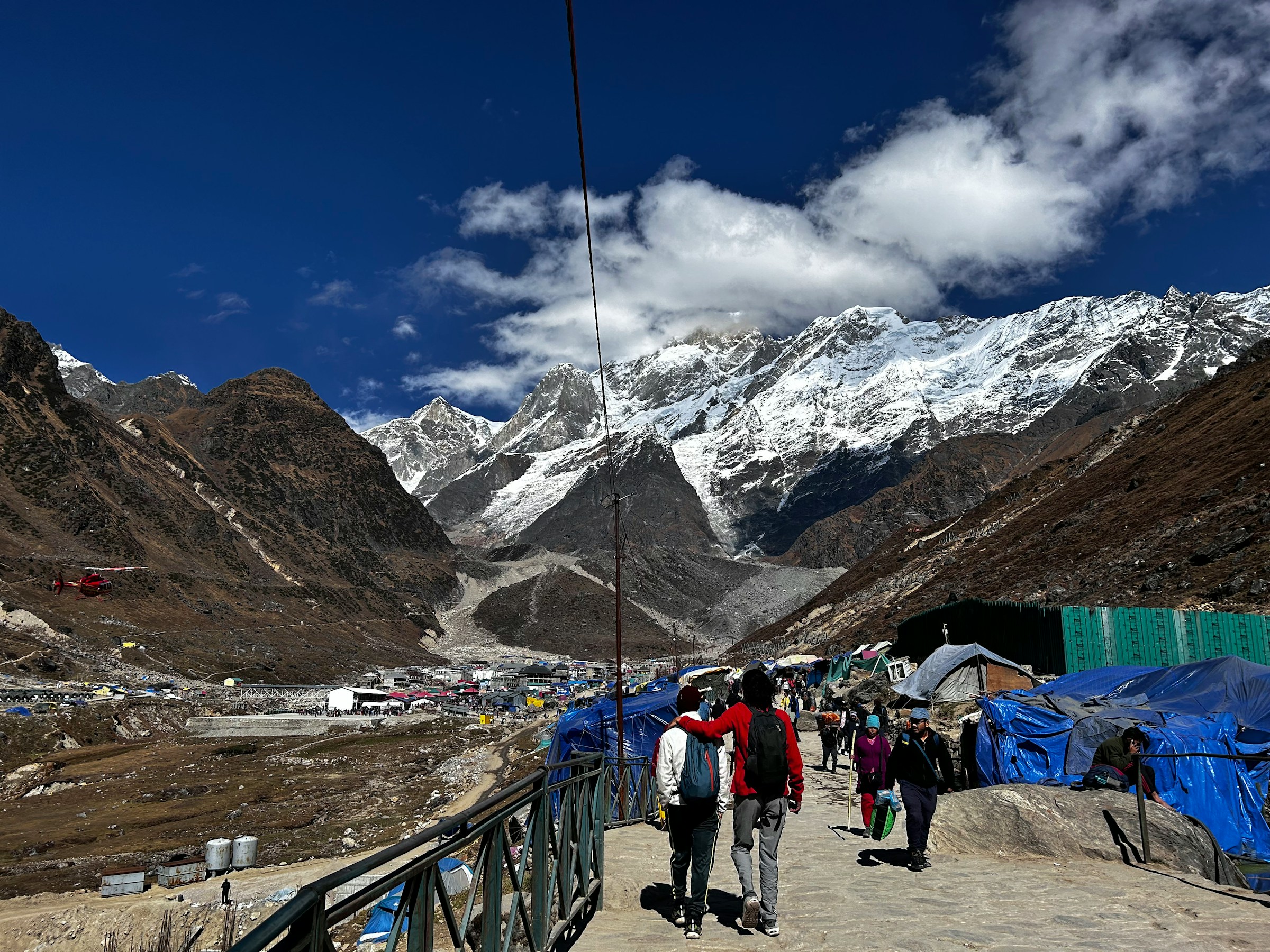Discover the perfect blend of adventure, culture, and natural beauty on the Langtang Gosainkunda Trek—an unforgettable journey into the heart of the Himalayas. Starting with a scenic drive from Kathmandu to Syabrubesi, you’ll trek through lush forests, charming Tamang villages, and wide-open alpine meadows rich in Himalayan charm.
Stand in awe at Kyanjin Gompa, a sacred Buddhist monastery surrounded by towering peaks, and hike up Kyanjin Ri for jaw-dropping panoramic views of the Langtang range. A major highlight is reaching the mystical Gosainkunda Lake, a sacred pilgrimage site that comes alive during the Janai Purnima festival—a spiritual and cultural experience like no other.
Whether you’re a first-time trekker or a seasoned hiker, this trek is flexible and beginner-friendly, with customizable itineraries now available for 2025 and 2026. Get ready for a journey that touches both heart and soul.
Overview
The Langtang Valley and Gosaikunda Lake Trek is a dream journey for those seeking a blend of mid-hill scenery and high-altitude lakes in Nepal. Every year, thousands of local and international travelers visit the sacred Gosaikunda Lake, a revered site for both Hindus and Buddhists, while others come to admire its natural beauty.
This trek is ideal for beginners with good fitness and a passion for hiking. It offers a captivating mix of lush forests, traditional villages, diverse wildlife, and panoramic views of the Langtang Himalayas and the remote Langtang Valley.
The Langtang region is renowned for its warm hospitality, rich cultural heritage, and Buddhist monasteries. The trail follows the Langtang River upstream through rhododendron, bamboo, and pine forests, ascending to alpine meadows and yak pastures en route to Gosaikunda.
The 15-day Langtang Gosaikunda Lake Trek begins with a scenic drive from Kathmandu along the Trishuli River to Trishuli Bazaar, Dhunche, and finally Syabrubesi, a Tamang village by the Bhote Koshi River. From there, the trek follows the Langtang River to Lama Hotel for an overnight stay.
The next stretch leads to Langtang Village, a large Tamang settlement, and continues to Kyanjin Gompa. A rest day at Kyanjin allows for acclimatization, with optional hikes to the yak cheese factory, Tserko Ri, or Kyanjin Ri for stunning mountain views.
After returning to Lama Hotel, the trek continues to Thulo Syabru, then Shin Gompa, and finally to Gosaikunda Lake. From there, the route crosses the Laurebina La Pass and enters the scenic Helambu region, reaching Ghopte.
The trail then descends through forests of rhododendron, pine, and juniper to Kutumsang, and further down to Chisapani via Pati Bhanjyang. On the final day, you’ll hike to Sundarijal, from where a short drive brings you back to Kathmandu.
At Green Lotus Trekking Pvt. Ltd, we proudly offer a detailed and flexible Langtang Gosaikunda Trek itinerary for 2025 and 2026. We’re happy to tailor the trek based on your schedule, budget, and fitness level. Feel free to contact us for pricing or any other inquiries.
Benefits of Booking the Langtang Gosaikunda Lake Trek with Us
- Complimentary airport pickup and drop-off
- Green Lotus Trekking duffle bag and T-shirt as souvenirs
- Langtang Gosaikunda Trek route map
- Oximeter for monitoring blood oxygen levels
- Medical kit for emergency use
- Free luggage storage at Green Lotus Trekking during the trek
What to Expect on the Langtang Gosaikunda Lake Trek?
Explore stunning glaciers, the sacred Gosaikunda Lake, Langtang National Park, and Shivapuri National Park on this remarkable trek. With dramatic mountain views, deep gorges, lush forests, traditional Tamang villages, and high mountain passes, this journey offers both adventure and cultural immersion.
As you trek through diverse altitudes, you’ll witness changes in climate, vegetation, and local lifestyles. The route features yak pastures, rhododendron and pine forests, hillside terraces, Buddhist monasteries, and peaceful valleys. Rare wildlife such as red pandas, Himalayan black bears, musk deer, and snow leopards inhabit this region, especially around Ghode Tabela and the lower Gosaikunda Lakes.
You’ll enjoy sweeping views of peaks like Langtang Lirung, Dorje Lakpa, Gangchenpo, Langshisha Ri, Kyunga Ri, Yansa Tsenji, and more. The warmth and hospitality of the local people add to the richness of the experience. The trek also passes through charming villages in the Helambu region before concluding with a scenic drive back to Kathmandu from Chisapani.
Is This Trek Right for You?
- Support Local Communities: After the devastating 2015 earthquake, locals have rebuilt their homes and lodges. Trekking here helps support their recovery.
- Wildlife and Nature Enthusiasts: Ideal for spotting langurs, red pandas, musk deer, and other rare Himalayan species.
- Cultural Exploration: Perfect for those interested in Tamang culture, Tibetan Buddhist heritage, and visiting traditional homes and monasteries.
- Off-the-Beaten-Path: A quieter alternative to Everest or Annapurna, offering an authentic experience of Tamang and Sherpa lifestyles.
- Physical Readiness: Suitable if you can comfortably walk 6–8 hours daily at altitudes ranging from 2,000 to 4,600 meters.
- Basic Facilities: Accommodations are modest, with simple meals, bucket showers, and squat toilets in some teahouses—best for those who value adventure over luxury.
Preparing for the Langtang Gosaikunda Lake Trek
This trek is moderately challenging, with key elevations reaching 4,773 meters at Kyanjin Ri and 4,610 meters at Laurebina Pass. Preparation and proper acclimatization are essential. Traveling with a group or guide is highly recommended for safety and assistance with permits and logistics.
Physical Preparation:
Begin training at least a month in advance. Cardio activities like walking, running, cycling, swimming, or gym workouts help build stamina. Practice hiking with a loaded backpack to get accustomed to trekking conditions.
Altitude Tips:
Though this trek doesn’t reach extreme elevations, altitude sickness can still occur. Avoid alcohol and caffeine, stay hydrated, and ascend gradually to help your body adjust.
With the right preparation, the Langtang Gosaikunda Lake Trek offers an unforgettable journey through one of Nepal’s most scenic and culturally rich regions.
Useful Information for Langtang Gosaikunda Lake Trek
Best Time to Trek
Spring (March–May):
Spring is the second-best season for the Langtang Gosaikunda Lake Trek. Forests burst with pink, red, and yellow rhododendron blooms, and the fresh scent of pine and maple fills the air. Wildlife becomes more active after winter, and lucky trekkers may spot a red panda. Weather is generally stable—cool, dry, and pleasant for hiking.
Autumn (September–November):
Autumn is the best season for this trek. The weather is dry and stable, trails are clean, and skies are clear, offering superb views of Langtang Lirung, Ganesh Himal, Himalchuli, and Dorje Lakpa. There are fewer insects, and temperatures are ideal for trekking.
Meals on the Trek
Teahouses serve a mix of local, Asian, and western dishes. Fresh vegetables and hydrating drinks (hot lemon, ginger, garlic soup, green tea) are recommended. Avoid non-vegetarian items, dairy, alcohol, coffee, and hot chocolate for hygiene and health reasons.
- Breakfast: Eggs, pancakes, muesli, bread, tsampa porridge, fruits, Tibetan bread, and hot drinks.
- Lunch & Dinner: Dal Bhat, Sherpa stew, Tibetan bread, momo, pasta, thukpa, noodles, salads, pizza, steaks, snacks, and desserts.
Accommodation
Accommodation ranges from basic to standard in traditional teahouses. At lower altitudes, expect rooms with beds, blankets, pillows, and attached bathrooms. Higher up, facilities are simpler with shared squat toilets and foam mattresses. Lower-elevation teahouses may offer Wi-Fi, hot showers, and western-style toilets. At higher elevations, expect bucket showers and limited amenities. Rooms are usually twin-sharing; private rooms cost extra.
Travel Insurance
Travel insurance is essential due to the trek’s remote, high-altitude nature. Ensure your policy covers:
- Medical expenses
- Emergency helicopter evacuation
- Coverage up to 5,500 meters
Insurance helps avoid large out-of-pocket costs in emergencies.
Altitude Sickness & Prevention
Altitude sickness can occur above 3,000m due to reduced oxygen. Symptoms include headaches, dizziness, fatigue, and appetite loss. Preventive measures:
- Ascend slowly and acclimatize
- Stay hydrated
- Avoid alcohol and smoking
- Eat energy-rich meals
- Carry basic remedies (ginger, garlic)
- Descend if symptoms persist
Trek Difficulty
This is a moderately challenging trek. The trail involves steep ascents and long walking days (6–7 hours). Key challenges include:
- Altitudes up to 4,773m (Kyanjin Ri) and 4,610m (Laurebina Pass)
- Daily elevation gains over 1,000m
- Risk of altitude sickness
Strong physical fitness and preparation are recommended. It’s a rewarding first trek for those ready to take it seriously.
Packing List
Pack light but smart. Essentials include:
- Hiking trousers/shorts, breathable shirts
- Waterproof jacket/raincoat
- Hat, gloves, sunglasses, and neck warmer
- Trekking boots, sandals, and a small backpack
- Sleeping bag, toiletries, sunscreen, sanitizer
- Water bottles and purification tablets
Safety Measures
Green Lotus Trekking prioritizes your safety:
- Experienced, trained guides with wilderness first aid certification
- Clean food and safe accommodation
- Essential equipment and first aid kits
- Leaders empowered to modify or cancel treks for safety
Booking Information
Green Lotus Trekking is a government-licensed operator and member of TAAN and NMA. To book:
- Pay a 10% deposit
- Send your passport, photo, insurance, and flight details within a week of booking
- Pay the balance by cash, bank transfer, or credit card upon arrival
We’ll provide full payment and trip details after confirmation.
Highlights
- Explore the scenic Langtang Valley, known for its glaciers, pine forests, alpine meadows, and terraced fields.
- Learn about the endangered Red Panda and its habitat.
- Enjoy stunning views of snow-capped peaks, waterfalls, deep gorges, stone mills, and suspension bridges.
- Witness majestic Himalayan mountains, including Langtang Lirung, Gang Chenpo, Naya Kanga, Dorje Lakpa, Kimsung, and Yansa Tsenji.
- Take in panoramic vistas from Kyanjin Ri and Tserko Ri.
- Trek through vibrant forests of rhododendron, pine, maple, and oak.
- Visit local cheese factories at Kyanjin Gompa and Shin Gompa.
- Interact with Tamang communities and experience their unique culture and traditions.
- Discover the sacred Gosaikunda Lake and nearby lakes such as Bhairab, Saraswati, and Surya Kunda.
- Explore the rich biodiversity of Langtang and Shivapuri National Parks.

